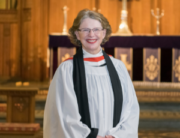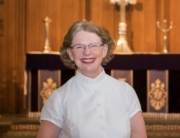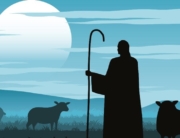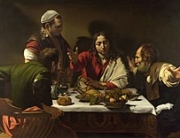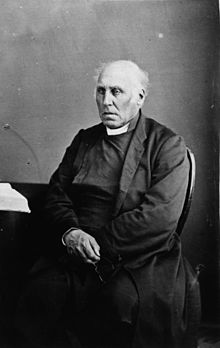
Cathedral History: Bishop Augustus Short
The Ven. Michael Whiting, Archdeacon Emeritus
+ In the name of the Father, and of the Son, and of the Holy Spirit.
For a moment recall the Feast of the Epiphany, 6 January. We celebrated on that day the wise men seeking Our Lord, and, on finding a baby, offering their gifts of gold, frankincense and myrrh. Now you and I cannot physically seek the baby Jesus, nor do we have such gifts to give anyway. Yet, here we are at worship today because we too are seeking, like the wise men following the star, for holiness itself. As our gifts, may I suggest these substitutes – instead of gold, our thoughts; instead of frankincense, our words; instead of myrrh, our actions. Make these our offerings, and we can begin to understand a giant of our church, our first bishop, Augustus Short.
Now imagine you are Augustus Short; it is a cold winter Saturday morning in January 1847 in the rural village of Ravensthorpe, Northamptonshire. You are having breakfast with Millicent and opening the post: unexpectedly, here is one from Lambeth Palace and the Archbishop of Canterbury, William Howley himself: Rev. and dear Sir…it being a matter of utmost importance to obtain the services of men who are qualified by ability, attainments, judgement, and temper for important stations in the Church as bishops in the newly-constituted dioceses in Australia (Howley then invites Short to be one such bishop and explains)…the diocese over which you would preside is situated in the north-east of Australia. It is not yet determined whether the see shall take its name from Newcastle or some other town … (and then as a Postscript, the Archbishop writes) PS – a new see is also to be established at Adelaide, in South Australia, and it is indifferent to me which of the two you would choose. Our great good fortune was that Short read the postscript and chose Adelaide, the afterthought!
Early 1847 was almost twenty-seven years since Augustus, as an eighteen-year old, had stood at the gate of the grand quadrangle of Christ Church Oxford in readiness to begin his university studies as a scholarship student. He had come from Westminster School (the Abbey is the school chapel) again having been a scholarship student there also. Then, following fifteen years at Christ Church, and eleven as a parish priest, this call to episcopal ministry challenged Short – what gifts of thoughts, words and actions would he now need to fulfil this ministry in a strange and curious land? [He would have been conscious at his consecration of this evening’s first reading; ’While they were worshipping the Lord and fasting, the Holy Spirit said, “Set apart for me Barnabas and Saul for the work to which I have called them.”]
When Millicent and Augustus arrived in Adelaide in late December 1847, in a heatwave, they could not have imagined they would stay 34 years (the longest colonial episcopate in Australia), and leave the outstanding legacies they did. Short understood quite quickly that he was not transplanting the established Church of England, although he was responsible for leading the people of this church in creating, in an isolated colony, a variation of that established church which was both faithful to the global faith of the English but accepting of appropriate local nuances.
Now it might surprise you that, from the start, he wanted not one but, as it were, two cathedrals in Adelaide. Short had the unique background of spending from ages 9 to 18 at the Royal College of St Peter at Westminster – the Abbey was merely an adjunct to the school (and remains so despite the tourist brochures and royal pretensions) and Short spent some of every school day playing in the Abbey cloisters and often worshipping in the Abbey. Not only that, but when he arrived at Christ Church, Oxford, across Cardinal Wolsey’s magnificent quadrangle was a small nondescript door which led into that college’s chapel, Christ Church Cathedral – yes, the cathedral church of the Diocese of Oxford. God may be everywhere, the gospel may be universal, Our Lord may be approached regardless of time and space but Short grew to maturity relishing the importance of dedicated sacred space, and his plans from the beginning were to create a similar grand and uplifting place in his new diocese.
The nineteenth century in England was a time of significant change and reform, not least in the church, and the great cathedrals featured in this – a re-discovery was underway – the cathedral as a centre of diocesan life; a space for excellence in worship and music; a place for preaching and theological study; a centre of craft in furnishings, vestments, embroidery, stained glass; a large place for community occasions. Short worked assiduously here in Adelaide for the creation of this fine place and space dedicated to St Peter – a cathedral to lay claim to Anglican religious leadership in the colonial community.
There is a delightful recollection by Short, in a letter to his brother Charles, of an evensong here to mark his seventy-fifth birthday in 1877:
The choir (surpliced and cassocked purple) of 16 nice Boys and 8 Choir men preceding me and my two Archdeacons Marryat and Dove, with Dr Dendy (precentor) bearing my pastoral staff, moving processionally to our places … I rub my eyes and ask myself ‘Can this really be the Adelaide I came to thirty years ago?
Yet, both in his schooling and in his tertiary education Short understood the intimate relationship of faith and learning. His other ‘cathedral’ exhibited the breadth of this vision, his foresight and his community standing: look no further than Australia’s unique boulevard, North Terrace, Adelaide, and one of its residents, the University of Adelaide. Short over the years pursued learning in all its forms for the local population, including the indigenous people. His crowning achievement was to be the principal founder of the University – its location, its place, was unique because of Short’s imagination and advocacy; its style was revolutionary – women allowed to graduate, and degrees in the sciences of all things, all before any university in Australia and all but one in the British Empire! His two cathedrals became lasting conjunctions of his thoughts, his words and his deeds!
We are often tempted to ask what motivates people like Augustus Short in their daily lives? Yet as Christians we do not need to ask that; people of faith instead ask how are we, and other believers, to find the holy, to think and speak and act in ways which makes Christ real in our lives, and to all whom we meet? What Short, and we, discover is portrayed eloquently in today’s gospel (John 5.1-9 – the healing of the paralysed man at the pool of Bethesda). The paralytic is helpless, and Our Lord, a stranger, takes the initiative, approaches him, and asks, Do you want to be made well? – the man is then cured by a command, stand up – and instructed to show proof of his healing, take up your mat and walk. No episode of Our Lord’s ministry is quite like this – Jesus initiates the meeting, God reaches out, and it dawns on us that it is not us who are searching but God who has come seeking. Is there anything more astounding? Such a moment inspires us, as believers, in all our thoughts, words and deeds. Holiness, and its intimacy, is come to us, not the other way around [or as our second reading this evening says;’ Listen, I am standing at the door, knocking: if you hear my voice and open the door, I will come in to you and eat with you, and you with me’]. Our response? To humbly listen to Jesus and surrender to His commands as our prayer and our worship reveal them to us; and we express our response in acts of loving kindness, minimising the associations of this world. What could be more simple?
When at Christ Church in the 1830s Short was a witness to, and defender of, the early Oxford Movement. Edmund Pusey was a teaching colleague and friend at Christ Church, and an acquaintance, John Henry Newman, lived in the next-door college. The real father of the Oxford Movement, however, was another resident of Christ Church, Professor of Divinity, Charles Lloyd, later Bishop of Oxford and who ordained Short. Lloyd pioneered the foundation of the great revival we know as the Oxford Movement with his re-affirmation of the writings of the early Church Fathers, and the historic catholicity and antiquity of the English church. In the 1840s Newman decided to publish a library of writings by, and about, these early Church Fathers, and he invited Augustus Short to contribute. Short chose St Hilary of Poitiers in France. Short’s work was unfortunately never published but it is not difficult to discover why St Hilary appealed so much to him; Poitiers was then, and remains, one of France’s great centres of learning. Let me diverge slightly.
When Janine and I were in Old Jerusalem recently, we visited just inside the Sheep Gate, the remarkable church of St Anne, adjacent to the setting of today’s gospel. The excavated remains of the pools of Bethesda, with the ‘five porticoes’ is clearly obvious, and we could easily imagine the ‘stirring of the waters in the pools’. It is an overwhelming sacred space even today. Recalling Ps. 46 (’there is a river whose streams make glad the city of God‘) and, Our Lord’s words in S. John 5.38 (‘whoever drinks of the water that I shall give, out of his heart shall flow rivers of living water springing forth to eternal life’) St Hilary had written … we perceive within us the first stirrings of the Holy Spirit…we gain knowledge of prophecy, speech full of wisdom, security in our hope, gifts of healing, and dominion over the devils made subject to us. These gifts, like drops of liquid, permeate our inner self, and so beginning, little by little, produce fruits in abundance. Here was an echo of S. John 15.8: ‘my Father is glorified by this, that you bear much fruit and become my disciples’.
Augustus Short ‘bore much fruit’ in his ministry, and if we are wise people, and ‘follow the star’ like those of old, God will surprise us too. As the paralytic stands and walks, we understand the teaching that our intimate fellowship with Christ hallows and makes holy, cures and amends, our daily lives. In S. John 14.23 Our Lord says: ‘Those who love me and keep my word, my Father will love them, and we will come to them and make our home with them’. As God ‘made His home’ in the lives of Augustus and Millicent Short, so God can abide within each of us.
When Augustus Short retired to England, an ailing man in his eightieth year, he could look back on a lifetime of helping to put in place the foundations not only of his church in this colony, but the foundations of a civilised and learned society. In his public farewell speaker after speaker now claimed that Short himself had become one of those foundations, and the most visible testimony to this is this Cathedral of St Peter, this honoured place and sacred space.
So now, with much loving kindness before the One God in three persons, Father, Son and Holy Spirit, be all praise, honour and thanksgiving, now and for all eternity. Amen

